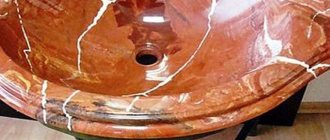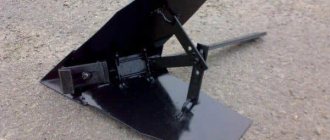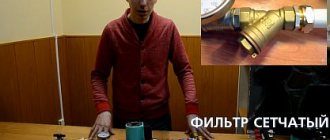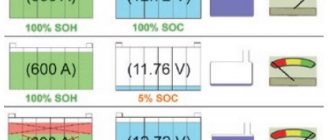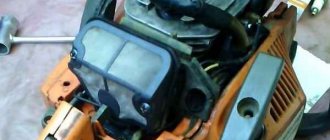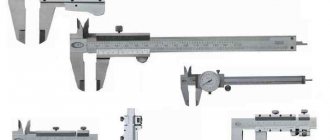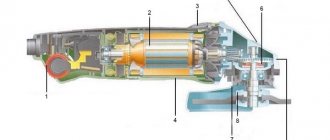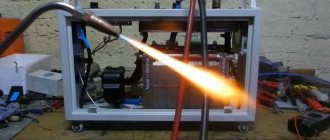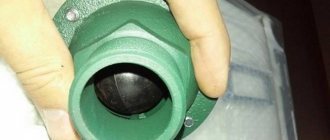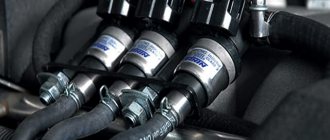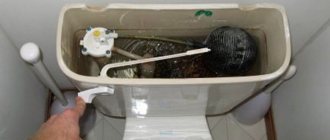Everything you need to know about using a hydrometer
Alcohol meters come in various models, but most often this device is a cone sealed on both sides, the lower wide part of which contains a weighting agent, and the narrow upper part contains a scale with markings. The main varieties include the following:
- Laboratory. This device is used by professionals, setting the level of liquid strength with fairly high accuracy;
- A digital, also known as electronic, hydrometer quickly and accurately takes the necessary readings, but is expensive;
- If you need to find out about the strength of a liquid, where there are other components in addition to alcohol and water, an optical device is used. This device will show results in a range of up to 40 degrees and provide information about the amount of sugar in the drink. It is usually used by producers of wine and various liqueurs;
- Ryumochny. As the name suggests, this compact specimen is convenient to use for checking liquids for alcohol content in small containers. However, its accuracy leaves much to be desired;
- A wine alcohol meter is used exclusively to determine the sugar content of alcohol (up to 25%) and alcohol content (up to 12%).
Using an alcohol meter correctly
For maximum measurement accuracy, there are instructions on how to use an alcohol meter. Compliance with these points is mandatory:
- If you have just diluted alcohol with water, then you need to wait until this chemical reaction is completed, during which the temperature of the solution rises. This usually takes no more than 10 minutes;
- Before immersing the device in liquid, you need to make sure that it is absolutely clean and dry. Wipe it gently with a soft cloth;
- It is better if the temperature of the alcohol-containing liquid is 20C°;
- For the most comfortable use of the device, it is better to pour the test liquid into a narrow and oblong container;
- Immerse the hydrometer slowly and strictly in the middle, without touching the edge of the container and its walls;
When its oscillations stop, you can evaluate the indicators on a scale.
Homemade alcohol meter
If you accidentally break this fragile glass device, and you need to measure the alcohol content in the liquid right now, then you can try making an alcohol meter with your own hands.
The main components of a homemade meter are a transparent plastic body from a ballpoint pen and a plastic drop bottle
It is important that the body (length - 14 cm) fits tightly into the neck
We cut off the edge of the body a little, but on the other side we leave the part with the cap. Screw the bottom part into the bottle (to make the connection tighter, the bottle can be preheated in hot water).
As soon as the device drops one and a half to two centimeters from the upper border of the bubble, you need to pour glue inside with a pipette (this is necessary to secure the weighting agent) and screw on the cap.
A notch made according to the water level will be considered 0.
Then, when you dip it in a container of vodka purchased from an official store (40 degrees), you will notice that it sinks deeper. Make a new mark and mark from 0 to 40 units.
Once you learn how to make an alcohol meter at home, you can easily measure the amount of alcohol. In addition, for more convenient use, you can arrange the notches in increments of 5 units.
Check for accuracy
If you are going to test an alcoholic drink for alcohol content, then keep in mind that the accuracy of the indicators may be affected by impurities included in the composition. The result of testing liqueurs, fruit liqueurs and other products will not be objective, since during production, factory devices are tested only in solutions of alcohol in water.
There is also an error due to temperature. If you were unable to meet the required indicator for the liquid being assessed at 20C°, then the indicators will not correspond to reality. The strength of a cold drink will be lower, and that of a warmer drink will be higher. Interestingly, these data are also affected by atmospheric pressure.
What types of hydrometers are there for distillers?
Today, there is probably not a moonshiner who does not have a simple alcohol meter.
These devices can be bought at markets and in specialized stores; they are often sent as a gift when ordering a moonshine still. But these hydrometers differ significantly from each other.
So what types of alcohol meters are they?
Domestic
One of the most famous models. The scale has divisions from 0 to 96°, and the error is insignificant - no more than half a degree, provided the correct conditions for measurement are met.
Ryumochny
It’s convenient because you can measure the strength of what you’re about to drink right in your glass. But its error is greater than that of a household one and can be 1% or more, depending on the model.
In addition, moonshine and vodka are served chilled. A bottle from the refrigerator may have 5-7 degrees, and the device will show fewer degrees than it actually is.
Laboratory, professional hydrometer
The most popular is ASP-3. Standardized according to GOST. The size is larger than the previous two - 20.1 cm.
The scale is divided by 1 degree, the error is no more than 0.5 degrees. “Works” in strength from 40 to 70°.
Digital
This device instantly reacts to changes in temperature, and additionally measures the temperature of the drink. Convenient to use while driving.
Optic
Hardly anyone uses it at home. This is professional equipment for determining the percentage of alcohol in spirits, as well as in wines and liqueurs.
Wine meter
It is not entirely suitable for moonshine brewing, since it has a small scale for measuring strength - up to 12°. But it can be used to determine the density of wort based on sugar
. Has a scale from 0 to 25%.
So it can be useful if you need to determine how much moonshine you can get from the supplied mash.
Electronic
What is an electronic alcohol meter? Where can I buy it? The electronic alcohol meter can continuously monitor the strength and be used as a thermometer. When making homemade vodka, thanks to modern developments, it is possible to measure the strength not in the liquid, but by controlling the temperature of the alcohol vapor. The consumer, while engaged in the distillation process, may not fill special containers. A digital electronic alcohol meter will determine and show the strength of the resulting composition during the process of making moonshine. These indicators will be more accurate than those of a conventional scale hydrometer.
In appearance, the device has the shape of a round or rectangular box. A sensor in the form of a probe is removed from it. The latter is immersed in liquid and measurements are taken. Where to buy an alcohol meter with a dipstick? There are stores with specialized assortments. You can also find them in regular household appliances or industrial goods stores.
How to choose a hydrometer for your own needs?
If your passion for moonshine brewing is only at the beginning level, then you can buy the most ordinary household or even a glass alcohol meter. Almost every distiller started with exactly this.
Later, with experience and the creation of more and more elite alcohol, as a rule, they switch to ASP-3. However, you should be somewhat skeptical about Chinese-made devices. Among them there are some that are not entirely accurate. Besides, they are too fragile. Sometimes they break when they are simply pulled out of the cardboard tube.
Electronic (digital) is just a moonshiner’s dream. And not only because of the accuracy of the readings, but also because of the ease of use. Thin long probe, digital display. There is no need to recalculate anything; the alcohol meter does this on its own, taking into account the temperature of the drink. And it shows alcohol content with minimal error.
Hydrometer-alcohol meter for moonshine brewing. How it works, can you do it yourself?
A hydrometer is a device designed to measure the density of various substances: electrolyte in batteries, fat in milk, etc.
But we are naturally interested in measuring the amount of alcohol in moonshine.
Therefore, we need an alcohol meter that indicates the percentage of alcohol in the liquid.
What types of hydrometers are there for distillers?
Today, there is probably not a moonshiner who does not have a simple alcohol meter.
These devices can be bought at markets and in specialized stores; they are often sent as a gift when ordering a moonshine still. But these hydrometers differ significantly from each other.
So what types of alcohol meters are they?
Domestic
One of the most famous models. The scale has divisions from 0 to 96°, and the error is insignificant - no more than half a degree, provided the correct conditions for measurement are met.
Ryumochny
It’s convenient because you can measure the strength of what you’re about to drink right in your glass. But its error is greater than that of a household one and can be 1% or more, depending on the model.
In addition, moonshine and vodka are served chilled. A bottle from the refrigerator may have 5-7 degrees, and the device will show fewer degrees than it actually is.
Laboratory, professional hydrometer
The most popular is ASP-3. Standardized according to GOST. The size is larger than the previous two - 20.1 cm.
The scale is divided by 1 degree, the error is no more than 0.5 degrees. “Works” in strength from 40 to 70°.
Digital
This device instantly reacts to changes in temperature, and additionally measures the temperature of the drink. Convenient to use while driving.
Optic
Hardly anyone uses it at home. This is professional equipment for determining the percentage of alcohol in spirits, as well as in wines and liqueurs.
Wine meter
It is not entirely suitable for moonshine brewing, since it has a small scale for measuring strength - up to 12°. But it can be used to determine the density of wort based on sugar
. Has a scale from 0 to 25%.
So it can be useful if you need to determine how much moonshine you can get from the supplied mash.
How to use an alcohol meter?
In order for the readings to be as accurate as possible, it is necessary:
- check the temperature of the alcohol-containing liquid. It should be 20°C. If less, let it sit in the room; if more, cool to the desired state. And having a moonshine calculator on hand, you can instantly determine the true strength of the drink without reaching 18-20°C;
- pour the alcohol into a glass measuring cylinder. If the hydrometer is small (wine glass, small household), you can use a glass. Of course, you can measure it in a three-liter jar (the alcohol meter will not sink), but this is, to say the least, inconvenient. Although it is generally accepted that the degree needs to be measured in a narrow vessel;
- Carefully lower the alcohol meter and make sure that it floats freely and does not stand on the bottom of the container. In addition, it should not touch the walls;
- After waiting for the vibrations to calm down, take readings.
An alcohol meter may be inaccurate if the following conditions are not met:
- the temperature of the measured liquid is less than or more than 20°C;
Attention.
When using a parrot to control strength during distillation, you need to take into account the difference in alcohol meter readings depending on the temperature of the alcohol-containing liquid. As a rule, you need to subtract a couple of degrees from the readings, since warm alcohol causes the hydrometer to “fib.”
- the liquid being measured has many impurities (fusel oils, etc.). For the same reason, it is impossible to measure the strength of mash or liqueur with sugar;
- The appliance is covered with grease or dirt. Before use, it must be wiped, and if necessary, washed, and then wiped dry.
An alcohol meter is a fragile device.
, it is easy to break if accidentally caught. Therefore, always store it in a box.
Operating principle and device
An alcohol meter is most often a small glass hermetically sealed vessel, wider at the bottom and narrower at the top. There is a weight at the bottom so that the hydrometer sinks into the liquid and stays afloat in a vertical position.
Digital is an electronic device, just like laser.
The operating principle is based on Archimedes' law of displacement of a body from a liquid.
How to check for accuracy?
If you doubt the accuracy of the readings of your household alcohol meter, then you can try to test it, say, with a friend who has a more accurate, professional device.
But the simplest method is to measure the strength of purchased strong alcohol of proven brands
. Preferably uncolored vodka. And for greater accuracy - also pharmaceutical 96-degree alcohol.
How to choose a hydrometer for your own needs?
If your passion for moonshine brewing is only at the beginning level, then you can buy the most ordinary household or even a glass alcohol meter. Almost every distiller started with exactly this.
Later, with experience and the creation of more and more elite alcohol, as a rule, they switch to ASP-3. However, you should be somewhat skeptical about Chinese-made devices. Among them there are some that are not entirely accurate. Besides, they are too fragile. Sometimes they break when they are simply pulled out of the cardboard tube.
Electronic (digital) is just a moonshiner’s dream. And not only because of the accuracy of the readings, but also because of the ease of use. Thin long probe, digital display.
There is no need to recalculate anything; the alcohol meter does this on its own, taking into account the temperature of the drink. And it shows alcohol content with minimal error.
DIY making
Making a simple alcoholometer with your own hands is not as difficult as it might seem. Of course, you shouldn’t use it all the time, because it’s unlikely that you’ll be able to achieve accurate readings, but if the distillation process is already underway, and you’ve just broken the alcohol meter, then it can be built in 15-20 minutes.
Take:
- a regular ballpoint pen;
- a plastic bottle for drops in the nose or eyes;
- shot or finely chopped wire;
- glue.
Now you can start getting creative:
- Unscrew the pen and remove the writing unit.
- Cut the handle cylinder to 1.5 cm and insert it tightly into the drop bottle. You can dip the neck of the bottle into boiling water, then quickly insert the handle into it, the connection will be tight and impermeable. But you can use, for example, a glue gun.
- Place the workpiece, bubble side down, into the water. The device will lie on the water.
- Carefully pour shot or wires through the body of the pen until the bubble drops and the water level is about 1.5 cm above it.
- Now, also carefully, drop glue into the bottle through the cylinder of the handle.
- Screw the cap on the pen.
- We do the first o, that is, we mark on the handle the place to which the device is immersed in water.
- Take it out of the water, pat it dry and dip it in store-bought vodka. We make the next mark – 40°.
- Divide the distance from 0 to 40 into 4 lines. Each corresponds to 10 degrees.
It is not difficult to calibrate a homemade alcohol meter even more accurately if you have several strong drinks (moonshine), the strength of which you know exactly. But you should not rely on the accuracy of such a hydrometer. Although it will help to roughly navigate the strength of what was kicked out.
Useful videos
Is there a difference between an alcohol meter and a hydrometer? How can you make your own device for measuring the percentage of alcohol in a solution:
A simple and intelligible review of household alcohol meters and professional hydrometers ASP 1 and ASP 3, look:
How accurate are Chinese alcohol hydrometers? We look at the comparison with Russian TSA in the video:
How to correctly measure alcohol content in solutions:
I advise you to go to an online store of moonshine stills and equipment and see what alcohol meters are currently offered on the market.
Have some delicious moonshine of the right strength. Like, recommend the article on social networks, subscribe to the channel.
Cooler
The golden rule for the full development of the flavor bouquet of wine during tasting is to slightly cool it. Naturally, this function is often performed by refrigerators/freezers. However, special coolers have been developed that are easy and quick to use. For example, cooling jackets. This wine cooler consists of interconnected cases with cold batteries. Thus, in any situation, you can cool the wine quickly enough, and also maintain the desired temperature throughout the tasting.
Recently, innovative technologies have become popular, among which the electronic cooler occupies a special place. In appearance, the device looks like an ice bucket, but its size is ideal for a wine bottle. This wine cooler is energy-efficient and absolutely simple, convenient for home use. https://www.youtube.com/embed/-XrntzUXlUg
Types of hydrometers
These devices have another name - an alcohol hydrometer.
There are several different varieties on sale today. Each specific type has its own nuances in operation, which must be taken into account when purchasing. Moreover, all types can be used both at home and directly in production.
What different types of alcohol meters consist of and how to check alcohol strength with their help, we will consider further.
Laboratory
This type of alcohol meter is considered the most accurate; the data obtained with its help is 99.9% accurate. It is used when carrying out special laboratory studies of various types.
Each scale of its division is equal to one degree.
The great advantage of this device is its ease of use, as well as the possibility of using it at home. Professional moonshiners in most cases prefer it.
Domestic
It has been specially designed for home use.
The scale of its divisions is also equal to one degree. There are universal household hydrometers, which are suitable for determining the strength of any drink, and individual ones, with the help of which you can determine the percentage of alcohol in only one drink.
Digital or electronic
A digital device for measuring degrees is characterized by high accuracy in measuring the alcohol content in liquid vapor.
- The results obtained during the measurement are displayed on a special mini-monitor.
- With its help you can determine not only the alcohol concentration, but also the temperature of the liquid.
Such devices are considered the most accurate, modern and easy to use. At the same time, they are also the most expensive.
Optic
Using this device you can determine the strength of alcoholic beverages up to 40 degrees.
The great advantage of this device is that it can be used to determine the strength of a variety of multi-component alcohol, such as liqueurs, wines, liqueurs and vermouths.
Simple and reliable to use.
Ryumochny
This device is specifically designed to measure the strength of alcohol already poured into a glass. It is compact in size, easy and quick to use. It is distinguished by high accuracy of the obtained measurement result.
Wine meter
As is already clear from the name of this device, it was specially created to determine the strength of various wines.
Its use allows you to determine not only the strength of these alcoholic drinks within 20 degrees, but also allows you to find out the exact concentration of sugar in them.
All these types of devices are further divided into two large groups, depending on the material they are made of:
- glass devices are light in weight and inexpensive, but require particularly careful use;
- metal alcohol meters are reliable, durable and have a higher price.
People who use hydrometers of various types say that when used correctly, there is no significant difference between these two types.
How to choose and use an alcohol meter correctly
If you decide to purchase an alcohol meter in a store, then pay attention to its integrity. It should not have any damage. It is advisable to make purchases only at trusted retail outlets, and not second-hand on a spontaneous market. The quality and durability of its work will depend on this. Chinese alcohol meters are often of poor quality. Keep this in mind.
The alcohol meter should be used with caution. After all, this is a fragile glass thing and can easily break. Before use, wipe it thoroughly and carefully lower it in the center into a container with an alcoholic drink. For the result to be accurate, the temperature of the liquid must be within 20 degrees. Store the alcohol meter in a securely protected place. This is especially important if there are children in the house.
How to properly store a hydrometer?
In most cases, in the homes of ordinary housewives or novice winemakers, alcohol meters are stored among other household utensils and often, when the device is needed, it is difficult to find it in a huge number of other items and accessories. Considering that a hydrometer is a precision measuring instrument, storing it in this way is strictly prohibited.
Experienced moonshiners and winemakers understand that during improper storage, the settings and accuracy of the alcohol meter can be disrupted, and this will lead to problems in the further production of alcohol. Therefore, such craftsmen store hydrometers exclusively in factory cases and packaging, in places where the device will not be subject to shaking or other mechanical stress that could compromise its accuracy or the integrity of the case. Most alcohol meters are made of glass and are fragile, so they can be easily broken. And the appearance of scratches, cracks or chips on the surface of the device body increases the likelihood that it has ceased to show accurate measurement results and needs to be replaced, since it cannot be repaired or restored.
Design and principle of operation
Thus, we have found out which brands of such devices are most popular these days and where to buy an alcohol meter (in Moscow - in a pharmacy, in a small town - easier via the Internet). Finally, let's figure out what this device actually is and what the principle of its operation is. In most cases, an alcoholometer is a narrow glass tube with the lower part filled with mercury. There is a clearly visible scale installed on top of it. In some cases, the latter may display the ratio of the mass of the solution and its volume. But most often in modern alcohol meters the scale shows the percentage of the ratio of alcohol and water. This eliminates the need for users to search for the necessary information in special tables.
The operating principle of this device is extremely simple. The density of a solution is directly proportional to its concentration. That is, the higher this indicator, the more alcohol is contained in the liquid being tested.
When using an alcoholometer, you should keep in mind that the density of solutions largely depends on their temperature. Therefore, instrument readings are correct only when the temperature of the liquid being tested is 20 degrees C.
In general, modern alcohol meters are very convenient devices that allow you to determine the composition of distilled moonshine with a high degree of accuracy. Finding a retail outlet that sells devices of this type will not be difficult. That is, the problem of where to buy an alcohol meter can be solved extremely simply in our time. This could be either a pharmacy located near your home, or a specialized online store.
How to use an alcohol meter correctly
To correctly determine the ethanol concentration in a drink, you need to know how to use an alcohol meter correctly. Glass fixtures must be stored in their original packaging to avoid being dropped or shaken. If cracks or chips are detected, the hydrometer is considered unusable.
Most alcohol meters undergo calibration or calibration at a temperature of +20⁰С (deviation - 0.5⁰С). If the temperature fluctuates, the device produces an incorrect value, and correction must be taken into account.
The operating principle of the alcohol meter is based on Archimedes' law. When the device is immersed in a liquid, it displaces a certain volume of it. This is how the density of the solution is found, which is equal to the mass of the hydrometer divided by the volume of the displaced solution. The strength is calculated by the value on the hydrometer scale.
The procedure for measuring the strength of a drink with an alcohol meter:
If the liquid being tested is stronger than the measuring range of the device, then it must be diluted with water in a ratio of 1:2 or 1:3 and remember the dilution factor. It is needed to calculate the strength of the drink. Remove the alcohol meter from its original packaging and wipe it with a clean, dry cloth. If the device is dirty and oily, it must be carefully washed and degreased with alcohol. Bring the temperature of the test solution to +20⁰С, get rid of bubbles and foam that create measurement errors. Pour the drink into a clean and dry container of narrow diameter and relatively high height so that the alcohol meter can fit completely into it. This could be a cylinder, a measuring cup, or a flask. Immerse the alcohol meter in a container with liquid with the wide part facing down.
Lower the device carefully so as not to break it. The device must be strictly in the center and not touch the walls of the container
Wait for the hydrometer to stabilize. If the device sinks, it means the solution is stronger than the measuring range. Dilute it. Record the measurement result along the lower edge of the meniscus. The resulting value must be multiplied by the dilution factor (if you diluted the solution with water). Remove the hydrometer from the container with the solution, wash it, wipe it dry and put it in the original packaging.
What is an alcohol meter
Alcohol meters are easy-to-use devices that must be in the arsenal of any person who produces various alcoholic beverages.
Everything is elementary - you immerse a measuring device containing a load of a certain mass into the liquid. The device pushes out part of the liquid, floating above the surface to the division that corresponds to its “degree” - Archimedes’ law.
During the manufacturing process, alcohol meters are calibrated in a water-alcohol mixture and are able to accurately determine the strength of alcohol ONLY if the latter consists exclusively of alcohol and water.
Not from sugar, fruit juices extracted from berries, fermented wort (there are separate wine meters for wines, we will talk about them below), but only and exclusively from alcohol and water. Any additive, even a minor one - for example, essential oils in distilled sambuca or absinthe - has an unpredictable effect on measurements, since the density of the substance increases - the device shows fewer degrees than it actually is.
Making your own alcohol meter
An alcohol meter is a device with which we can measure the alcohol content in a finished alcoholic drink.
Factory alcohol meters consist of a glass container with a wide oblong bottom and a narrow top. The bottom is filled with resins for weighting, and on the elongated top, in the shape of a tube, a measurement scale is applied.
This thing will be very useful for winemakers or those who make moonshine. Alcohol meters are:
- Household - used to establish the strength of moonshine, alcohol and vodka in the range from 0 to 96 degrees;
- Ryumochnye - the name speaks for itself. These alcohol meters measure the strength of drinks up to 96 degrees in small containers: glasses, glasses, etc.;
- Laboratory - the most high-precision professional alcohol meters;
- Optical - used for measuring the strength of liqueurs, wines and other alcoholic beverages up to 40 degrees;
- Vinometers – this type of alcohol meter is also called a hydrometer. It is used to measure the strength of wine. It determines the level of alcohol and sugar in the liquid. For stronger drinks, such a device is not suitable, since its measurement range is from 0 to 12 degrees of alcohol and from 0 to 25 degrees of sugar content.
DIY alcohol meter
However, if there is no opportunity or desire to buy such a device, then you can make it yourself. And we can say with confidence that homemade alcohol meters are not much inferior to factory instruments.
From a ballpoint pen
To make such a device you will need:
- a ballpoint pen case (the simplest one) no more than 14 centimeters in length;
- a plastic container for nasal drops and small shot (you can also use finely chopped steel wire or finely chopped lead for weight).
The following is done:
- The lower part of the handle is cut off by half a centimeter.
- To make it easier for the pen case to fit into the neck of the drop bottle, you need to hold it in hot water.
- The pen case is carefully screwed into the neck of the bottle.
- The workpiece is lowered into a container with warm water and a weighting agent is loaded through the upper hole until it is immersed in water one and a half to two centimeters from the neck. A mark is made on the case (it will be 0).
- Carefully bury the glue inside to fix the weighting material and screw the cap tightly.
- The alcohol meter is immersed in a container with 40-degree vodka. Mark 40.
- Use a ruler to measure the distance from 0 to 40 and divide by 40. This reading will correspond to one degree.
- Using the data obtained, a scale is formed. The alcohol meter is ready.
Alcohol meter from a fishing float
To make an alcohol meter from a fishing float you need:
- Take a float with a long pole. If necessary, attach a weight to the lower part to lower the float to the desired level.
- Place it in water at room temperature, put a mark that will be equal to zero.
- Pour 40 degrees vodka into a deep container, lower the float there and also put a mark. And, using the principle of an alcohol meter, form a scale from a ballpoint pen.
Test tube alcohol meter
To make such a device you will need:
- test tube;
- weighting agent;
- test tube stopper and wooden rod 12–15 centimeters.
The next steps are:
- It is necessary to load the weighting agent into the test tube so that it is completely immersed in the liquid, but does not sink to the bottom, but floats near the surface.
- Secure the weighting agent with glue.
- Close the test tube with a stopper and insert a wooden rod into the stopper.
- According to the manufacturing principle of the above instruments, apply a scale to the rod.
In conclusion, we can say that homemade alcohol meters are practically in no way inferior to domestically produced factory instruments. Moreover, they work properly, unlike their Chinese counterparts, which are consistently inaccurate in their readings. It’s up to you to decide which device to use.
Test tube alcohol meter
We take a glass test tube 7-9 cm high. We place a shot-shaped weight inside it, or you can take a fishing weight. After this we close it with a stopper. We insert a rounded wooden rod into the center of this plug. Its length should be about 12-15 cm. And then we make notches on the rod according to the principle of the previous two methods. The maximum value is 96 degrees, the starting value is zero. To apply a mark of 96 degrees, use a container with alcohol. Divide the segment from 0 to 96 by 10 and put marks. The value of 1 division will be 9.6 degrees.
As you can see, making an alcohol meter is very simple. Such a device will become a faithful assistant to winemakers and moonshiners. A distinctive feature of a home alcohol meter is its accuracy. But our Chinese brothers very often suffer from this quality.
How to use the device
We’ll talk about where to buy an alcohol meter below. Now let's figure out how to use this device. Using an alcohol meter to determine the percentage of alcohol in a solution is very simple. To do this, its mercury part is placed in the test liquid so that it does not touch the walls and bottom of the vessel. Readings for most household alcohol meters are taken from the lower edge of the meniscus (along the green arrow).
In order to determine the percentage of alcohol content in a solution as accurately as possible, it is worth taking several measurements and then calculating the arithmetic average. Actually, the study itself is most conveniently carried out by pouring the liquid into a glass or some other container of not too large volume.
When carrying out measurements, among other things, it is worth remembering that they can be considered accurate only when the test solution contains only alcohol and water. The presence of any impurities greatly affects the readings of the device. This is why alcohol meters are never used to determine the strength of wine. In this case, other devices are used.
Check for accuracy
If you are going to test an alcoholic drink for alcohol content, then keep in mind that the accuracy of the indicators may be affected by impurities included in the composition. The result of testing liqueurs, fruit liqueurs and other products will not be objective, since during production, factory devices are tested only in solutions of alcohol in water.
There is also an error due to temperature. If you were unable to meet the required indicator for the liquid being assessed at 20C°, then the indicators will not correspond to reality. The strength of a cold drink will be lower, and that of a warmer drink will be higher. Interestingly, these data are also affected by atmospheric pressure.
Found a mistake? Select it and press Shift + Enter or click here
Parrot for moonshine - a device that measures strength in real time
A hydrometer is a device that can be used to determine the alcohol content of a solution. This device is also called an alcoholometer. It is designed to determine the amount of alcohol only in a solution of alcohol and distilled water or in an aqueous solution. This device is not used to determine degrees in solutions with impurities! For example, in liqueur that contains sugar. After all, the more impurities in a liquid medium, the less accurate the hydrometer will show. This is a fairly fragile device that can break quite unexpectedly.
Therefore, you need to use it extremely carefully! It should be stored in its original packaging in a safe place. It should not be subjected to shaking or other mechanical impacts, which could cause damage to the device and inaccurate readings.
To determine the alcohol in a liquid, it is necessary to immerse the hydrometer in a narrow, tall vessel containing alcohol or an alcohol-containing liquid. When immersing the device, carefully lower it to the very bottom, otherwise, if you simply throw it into a container with liquid, it may suddenly sink to the bottom and break. The alcohol meter should be located approximately in the middle of this vessel and should not touch its walls. You should first wipe the device from greasy or dirty stains and immerse it in dry liquid.
You need to wait until the mercury growth stops and look at the scale. The readings on the hydrometer must be taken along the upper edge - the meniscus, namely, along the red arrow. The liquid being measured must have a temperature of degrees for a more accurate measurement. Any amateur winemaker in the household should have a device to determine the alcohol concentration in the finished drink.
To make it yourself, you need to prepare an ordinary ballpoint pen and a plastic bottle. For example, from under nasal drops, the base of the pen should fit tightly into the base of the bottle. Next, you should remove the rod from the handle and cut its body to approximately 0.
The top cap of the pen also needs to be unscrewed. In order for the handle to fit well into the bottle, it must be heated in hot water, and the cut part of the handle must be inserted into the neck of the bottle. Next, you need to calibrate the resulting workpiece. To do this, you need to take a vessel with water and place the future hydrometer in it so that the bubble lies on the water. Through the top hole we pour some kind of weight into it, you can use finely chopped wire or small shot.
We load until our device sinks in water by about 1. Using a pipette or other narrow device, fill the load with glue. And then screw on the top cap of the pen. Make a mark at the water level on the handle.
This level will correspond to the zero mark and mean that there is no alcohol in the liquid. Pour vodka into another container, we know that it has a strength of 40 degrees. Place a homemade hydrometer in this liquid and make a new mark corresponding to 40 degrees. To determine the price of one division of the future scale, it is necessary to measure with a ruler the distance from the zero to the fortieth mark in millimeters, and divide the resulting result by For example, the distance from 0 to 40 is mm.
This means that one division is 4 mm and 1 degree, respectively. In this way, you can make a hydrometer with your own hands, which will determine the strength of the liquid from zero to 40 degrees
When choosing a device, pay attention to the integrity of the vessel so that there are no cracks, chips or other damage. Do not purchase an alcohol meter from dubious retail outlets and at a very low price, because in this case you can purchase a low-quality product that will incorrectly determine the percentage of alcohol
Judging by the reviews of those who have used domestic and Chinese-made alcohol meters, they preferred our manufacturer, noting the greater accuracy and quality of such devices. In general, you can buy it in almost any hardware store or market.
If you are a car enthusiast, then a hydrometer with a scale for indicating the percentage of alcohol can be bought at a car store. A good hydrometer can be ordered from a specialized online store that sells goods for winemaking and others.
How to make a hydrometer with your own hands?
A hydrometer is a device that can be used to determine the alcohol content of a solution. This device is also called an alcoholometer. It is designed to determine the amount of alcohol only in a solution of alcohol and distilled water or in an aqueous solution. This device is not used to determine degrees in solutions with impurities! For example, in liqueur that contains sugar. After all, the more impurities in a liquid medium, the less accurate the hydrometer will show.
The nuances of using alcohol meters
One of the main criteria that plays an important role in the production of alcohol is its strength. People have long tried to measure strength using a variety of methods and techniques.
If you are the happy owner of a high-quality alcohol meter, you won’t encounter any particular difficulties in using it. Included with the device itself, you will also need a small transparent cylinder - 100 ml will be enough to avoid plopping the hydrometer into a jar of moonshine. A thermometer will also come in handy - those with a remote probe are especially good, but any other will do - to correct for temperature.
We pour a water-alcohol solution or moonshine into the cylinder, lower the alcohol meter into it - you can give it a slight rotation with your fingers to get rid of bubbles.
We wait until the device levels out and see at what point it stops. If the “float” sank, it means it’s biting! That is, the alcohol is too strong, you need to take an alcohol meter designed for a higher degree. If, on the contrary, it floats on the surface, like a dry log, the alcohol contains too few revolutions and we need a less high-degree device.
Some tasted the drinks, trying to determine how many degrees they had using the receptors on their tongue. Others lit a small amount of alcohol, watched the flames, and decided how high quality the alcoholic drink was.
How to determine the strength of alcoholic drinks?
An alcohol meter, despite its ease of use and rather simple design, is actually a rather complex device.
When using it, you need to observe some subtleties that will help you get a reliable result:
you can’t just throw the hydrometer into a container with liquid, you need to slowly dip it into it; before taking final readings, you must wait until the alcohol meter freezes; during measurements, the device should under no circumstances touch the walls or bottom of the vessel; it is important to select an alcohol meter that is designed to determine the strength of a suitable liquid; Do not immerse the alcohol meter in very hot or cold liquid. This will lead to incorrect measurement results. Most often, these devices are used to find out exactly how many degrees of alcohol are contained in drinks such as wine, moonshine or beer
Most often, these devices are used to find out exactly how many degrees of alcohol are contained in drinks such as wine, moonshine or beer.
In each specific case, the procedure will be slightly different from each other.
Moonshine
Instructions for measuring distillate strength:
- The device must be wiped with a dry cloth to remove moisture, dust and any other contaminants.
- You should make sure that the moonshine has a room temperature of no lower than 18 and no higher than 25 degrees.
- Pour an alcoholic drink into a glass.
- Carefully place the alcohol meter into it and wait until it locks in one position.
- Evaluate the result obtained.
Watch a video that describes the step-by-step process of measuring alcohol strength:
For different devices, readings must be taken from the top or bottom, so be sure to read the manufacturer’s instructions before taking measurements.
Table of alcohol content and its dependence on temperature:
You might be interested in reading about the famous Lager beer!
Beer
It’s worth saying right away. That a regular alcohol meter, which is designed to determine the strength of alcohol, moonshine or vodka, is not suitable for beer.
You can measure the strength of this alcoholic drink using an optical hydrometer, which is suitable for any alcoholic liquids that contain alcohol, water and other additives.
Procedure:
- Place the device in a vessel with liquid heated to 15 degrees.
- Wait until all gas bubbles disappear.
- Take the obtained measurements.
This procedure must be performed twice. The first time before the start of fermentation, and the second time after its completion.
From the results obtained in the first measurement, the data obtained in the second study are subtracted and the strength of the beer is obtained.
Each manufacturer must indicate on the label or packaging itself the strength of each unit of its alcohol.
Check for accuracy
If you are going to test an alcoholic drink for alcohol content, then keep in mind that the accuracy of the indicators may be affected by impurities included in the composition. The result of testing liqueurs, fruit liqueurs and other products will not be objective, since during production, factory devices are tested only in solutions of alcohol in water.
There is also an error due to temperature. If you were unable to meet the required indicator for the liquid being assessed at 20C°, then the indicators will not correspond to reality. The strength of a cold drink will be lower, and that of a warmer drink will be higher. Interestingly, these data are also affected by atmospheric pressure.
Found a mistake? Select it and press Shift + Enter or click here
